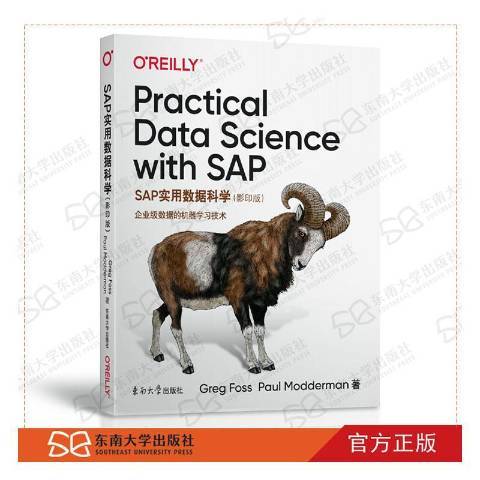內容簡介
你是否正在使用SAP ERP系統並迫切希望釋放其數據的巨大價值?通過這本實用指導書,SAP資深專家Greg Foss和Paul Modderman為你展示如何使用若干數據分析工具來解決SAP數據中存在的有趣問題。你將跟隨一個貫穿全書的虛構公司,學會處理真實場景中遇到的問題。
使用真實數據創建示例代碼和可視化圖,SAP業務分析師將學會實用的分析方法,從而獲得對業務數據的更深入了解。數據工程師和數據科學家將探索如何將SAP數據添加到他們的分析過程中。通過對SAP流程和數據科學工具的深入研究,你將找到揭露數據真相的強大方法。
圖書目錄
Preface
1. Introduction
Telling Better Stories with Data
A Quick Look: Data Science for SAP Professionals
A Quick Look: SAP Basics for Data Scientists
Getting Data Out of SAP
Roles and Responsibilities
Summary
2. Data Science for SAP Professionals
Machine Learning
Supervised Machine Learning
Unsupervised Machine Learning
Semi-Supervised Machine Learning
Reinforcement Macl'rine Learning
Neural Networks
Summary
3. SAP for Data Scientists
Getting Started with SAP
The ABAP Data Dictionary
Tables
Structures
Data Elements and Domains
Where-Used
ABAP QuickViewer
SE16 Export
OData Services
Core Data Services
Summary
4. Exploratory Data Analysis with R
The Four Phases of EDA
Phase 1: Collecting Our Data
Importing with R
Phase 2: Cleaning Our Data
Null Removal
Binary Indicators
Removing Extraneous Columns
Whitespace
Numbers
Phase 3: Analyzing Our Data
DataExplorer
Discrete Features
Continuous Features
Phase 4: Modeling Our Data
TensorFlow and Keras
Training and Testing Split
Shaping and One-Hot Encoding
Recipes
Preparing Data for the Neural Network
Results
Summary
5. Anomaly Detection with R and Python
Types of Anomalies
Tools in R
AnomalyDetection
Anomalize
Getting the Data
SAP ECC System
SAP NetWeaver Gateway
SQL Server
Finding Anomalies
PowerBI and R
PowerBI and Python
Summary
6. Predictive Analytics in R and Python
Predicting Sales in R
Step 1: Identify Data
Step 2: Gather Data
Step 3: Explore Data
Step 4: Model Data
Step 5: Evaluate Model
Predicting Sales in Python
Step 1: Identify Data
Step 2: Gather Data
Step 3: Explore Data
Step 4: Model Data
Step 5: Evaluate Model
Summary
7. Clustering and Segmentation in R
Understanding Clustering and Segmentation
RFM
Pareto Principle
k-Means
k-Medoid
Hierarchical Clustering
Time-Series Clustering
Step 1: Collecting the Data
Step 2: Cleaning the Data
Step 3: Analyzing the Data
Revisiting the Pareto Principle
Finding Optimal Clusters
k-Means Clustering
k-Medoid Clustering
Hierarchical Clustering
Manual RFM
Step 4: Report the Findings
R Markdown Code
R Markdown Knit
Summary
8. Association Rule Mining
Understanding Association Rule Mining
Support
Confidence
Lift
Apriori Algorithm
Operationalization Overview
Collecting the Data
Cleaning the Data
Analyzing the Data
Fiori
Summary
9. Natural Language Processing with the Google Cloud Natural Language API
Understanding Natural Language Processing
Sentiment Analysis
Translation
Preparing the Cloud API
Collecting the Data
Analyzing the Data
Summary
10. Conclusion
Original Mission
Recap
Chapter 1: Introduction
Chapter 2: Data Science for SAP Professionals
Chapter 3: SAP for Data Scientists
Chapter 4: Exploratory Data Analysis
Chapter 5: Anomaly Detection with R and Python
Chapter 6: Prediction with R
Chapter 7: Clustering and Segmentation in R
Chapter 8: Association Rule Mining
Chapter 9: Natural Language Processing with the Google Cloud Natural
Language API
Tips and Recommendations
Be Creative
Be Practical
Enjoy the Ride
Stay in Touch
Index

